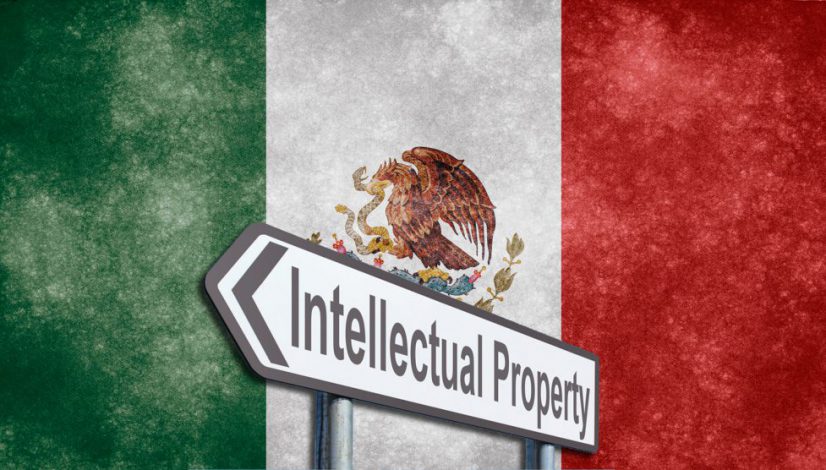Understanding Intellectual Property Protection in Mexico
Intellectual property is among the most valued assets companies today can have. Developing, protecting, and deploying this property is essential to success. From the first phases of research and development through to the manufacturing of finished products, it is critically important for businesses to be confident that their unique value is safeguarded.
Fortunately, Mexico has a history of detailed protections, effective enforcement, and an environment that inspires investor confidence. Companies seeking to manufacture in Mexico should take steps to adequately understand the way intellectual property protection in Mexico works, and how they can most benefit from these protections.
Mexico Is Pro-Business
Much has been written on the many benefits of manufacturing in Mexico. The country has made great strides in recent decades to foster an environment that is pro-manufacturing and pro-business. It’s no wonder that the country is considered the hub for North American manufacturing. Recent administrations have overhauled infrastructure, the tax regime, and incentives to attract foreign direct investment (FDI).
Intellectual property law in Mexico is no exception to this pro-business atmosphere. The country boasts some of the most rigid and well-outlined IP laws for business in the world. And intellectual property law in Mexico also proactively enforced to ensure maximum protection for innovation and high-value manufacturing.
Additionally, the Latin American country is attracting foreign businesses via extensive trade agreements in place with dozens of countries around the world. Many foreign companies find Mexico to be a perfect production base for export manufacturing – not only to the US but to Europe and Asia, too. Additional benefits manufacturers find in Mexico include:
- An educational focus that continuously produces highly skilled workers trained in specialty roles like engineering, software design, welding, etc. Mexico invests heavily in technical training centers, colleges, and apprenticeship programs.
- Labor costs on par with or lower than Asian labor. Mexican labor is typically more productive than Chinese labor and on average approximately 50-70% of the cost of labor in most manufacturing nations.
- Proximity to the largest consumer market in the world just north of the border. Manufacturers have shorter supply lines, lower transport expenses, faster times to market, and ease of management for companies based in Canada or the US – countries which share common time zones with Mexico.
The History of Intellectual Property Protection in Mexico
Mexico’s IP protections must be viewed as a part of an overall positive attitude towards business. The country has strategically positioned their economy to be one of the most beneficial climates for successful producers. This emphasis on protecting innovation and intellectual property goes all the way back to the 1800s.
From the beginning, European tradition influenced intellectual property protection in Mexico. This is especially true of Spanish and French standards. At first revolving around property rights for inventors under Spanish rule, Mexican trademark law and patent law in Mexico were expanded from later French updates, including the “Law of Manufacturing Trademarks.” This basic, 19th-century framework still underlies intellectual property protection in Mexico.
One law that retained many aspects from these older property laws was the 1890 “Law of Patents and Privilege,” which remained in effect and virtually unchanged until 1943. In that year, Mexico implemented the “Law of Industrial Property” – influenced by the London review of the Convention of Paris Union. This law was sometimes considered too aggressive in protecting intellectual property, so it was revised in the 1976 “New Law of Inventions and Trademarks.” The current foundational law is the 1991 New Law of Industrial Property, largely intended to bring Mexico’s IP protection system in line with NAFTA.
Current Legal Framework for IP Protection in Mexico
Today, Mexico is a civil law country, so case law does not set precedent for future cases. Because of this, intellectual property law in Mexico is significantly more detailed and comprehensive than statutes found in the US and other manufacturing countries. Some inventions are not patentable, for example. Some of these include:
- Natural items
- Computer programs
- Info presentation processes
- Artistic/literary works
- Medical procedures
- Scientific theories
Laws governing IP protection in Mexico only apply to inventions that have specific industrial application. Ideas may not be patented, but processes that result in a final use may be protected via patent. Other protections include:
- Utility models
- Industrial designs
- Trademarks
- Trade secrets
- Slogans
- Trade names
- Origin identification
Currently, several governmental agencies oversee intellectual property rights based on federal copyright law in Mexico and the 1991 industrial property law as well as international agreements. Most notable among these international agreements include the North American Free Trade Agreement (NAFTA) and the Trans Pacific Partnership (TPP). The TPP in particular, albeit somewhat controversial, includes extremely robust protections and surpasses standard protections, adding various other digital assets and term lengths. Other agreements include:
- Paris Convention for the Protection of Industrial Property (1903)
- Nice Agreement Concerning the International Classification of Goods and Services for the Purposes of the Registration of Marks (2001)
- Lisbon Agreement for the Protection of Appellations of Origin and their International Registration (1966)
- Patent Cooperation Treaty (1995)
- Singapore Treaty on the Law of Trademarks (2006)
- Trademark Law Treaty (1994)
- Vienna Agreement Establishing an International Classification of the Figurative Elements of Marks (2001)
- Strasbourg Agreement Concerning the International Patent Classification (2001)
- Locarno Agreement Establishing an International Classification for Industrial Designs (2001)
- Protocol Relating to the Madrid Agreement Concerning the International Registration of Marks (2013)
Mexico is also a member of the World Intellectual Property Organization.
Specific Intellectual Property Protection in Mexico vs. China
Because most manufacturers considering outsourcing to Mexico are also interested in what China, it’s helpful to compare. Considering intellectual property protection in Mexico vs. China is an interesting study in contrasts. In few areas is the difference between manufacturing in Mexico and manufacturing in China so distinct as in the area of IP laws. Indeed, many companies have found intellectual property protection in Mexico preferable for their purposes over China. Consider the following ways Mexico surpasses China in IP protections.
- Copyright
China grants copyrights to authors of original works typically for the life of the author plus 50 years. Copyrights are available only to Chinese nationals. Mexican copyright law, on the other hand, automatically grants protections to authors for their lifetime plus 75 years. And this protection is available to foreigners and Mexicans alike, because Mexico is a member of both the Universal Copyright Convention and the Berne Convention. - Slogans & Trademarks
China allows companies to register and license company names, brand names, slogans, and trade dress for China and worldwide markets. The copyright exists for 10 years after approval is granted, and applicants may re-apply. Mexican trademark law, however, offers protection from the time of filing. The protection lasts for 10 years and may be renewed as long as the trademark is in use. - Patents
Patent applications in China take up to three years to be approved, typically undergoing extensive review. The patent is in force from the publication in the Patent Gazette. The terms vary from invention to invention. In Mexico, patents are granted to Mexican and foreign inventions alike for terms of 20 years. Inventions must be new and have clear industrial applications and are licensed on privately negotiated terms. Mexico’s recent membership in the TPP has increased eligible patent applications, extended protection terms and privileges, and increased infringement penalties. - Intellectual Trade Secrets
There is virtually no protection for intellectual trade secrets in China. The country has increased efforts to fight counterfeit activities, but rarely enforces what few laws it has on the books. In fact, the Chinese government participates in counterfeiting operations. But Mexico faithfully enforces counterfeiting laws via the Mexican Institute of Industrial Property. Industrial trade espionage and theft are subject to severe penalties. And the TPP has the potential to increase fines for counterfeiters and those attempting to steal trade secrets.
How to Protect Intellectual Property in Mexico
In order to maintain a competitive edge and safeguard company assets, businesses must protect their intellectual property. But there is a right way and a wrong way to go about this defensive strategy. How to protect your intellectual property is an important consideration in today’s global and diverse economy. For this reason, it is important to understand what options and responsibilities a company has in Mexico. Below are some of the most important considerations for businesses actively pursuing intellectual property protection in Mexico:
- Implement Adequate Security Measures
Don’t assume good IP laws will automatically protect your company’s assets. Perform due diligence to document all trade secrets, execute confidentiality agreements with employees and contractors, and keep access on a need-to-know basis. - Keep Trademarks Distinct
Occasionally, the Mexican Trademark Office overlooks registrations for names similar to others already registered. This can dilute the impact of your trademark and lead to loss of protection. Monitor trademarks registration and file briefs informing the Trademark Office of similarities, infringements, and trademarks they should not grant. - Include Intellectual Property Clauses in Employment Contracts
To avoid confusion over who owns rights to trade secrets and inventions developed by employees, set forth clear clauses dealing with ownership. Remember that federal law requires employer ownership of employee inventions insomuch as they are pursuant to the employee’s job description. In cases of art, Mexico copyright law grants 50% ownership each to employee and employer unless the employment contract already determines otherwise. - Include IP and Exit Clauses in Licensing Agreements
If you do not have clauses specifying who owns what in the event of a licensing or distribution termination, ownership of IP assets might become clouded. Clauses should require proper use of assets by the distributor of licensee. Likewise, the licensor should not register any IP assets. In the event of a termination, they would own these registrations.

An Environment for Success
Intellectual property protection in Mexico has a long history of working for the manufacturer. In an overall pro-business environment, foreign companies can expect to retain rights to their trade secrets, proprietary processes, and copyrighted assets. Whether businesses establish their own presence in Mexico or take advantage of the convenience of a shelter service, Mexico’s IP laws are accessible and beneficial for innovative producers interested in maintaining their competitive edge.
With a legal framework based on European principles and intertwined with numerous free-trade agreements around the globe, Mexico offers much for US and European investors. Here, production of cutting-edge products can be achieved efficiently, affordably, and safely. Mexico’s history is replete with provisions to protect innovators and production. And today, the country is home to outsourced operations for some of the leading high-technology manufacturers in the world. Many are discovering that Mexico offers a climate optimized for innovation and success for companies of all kinds and sizes.

